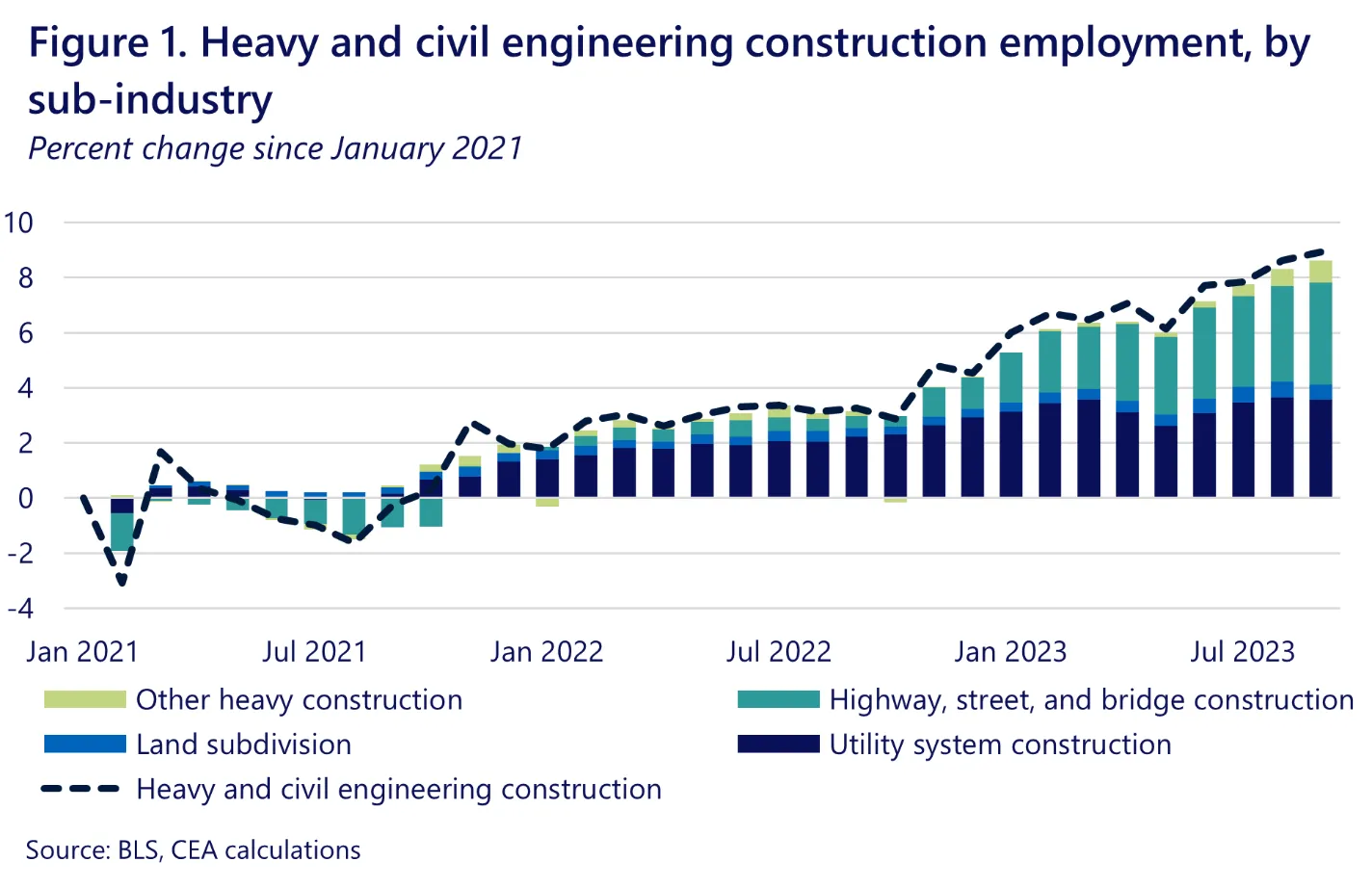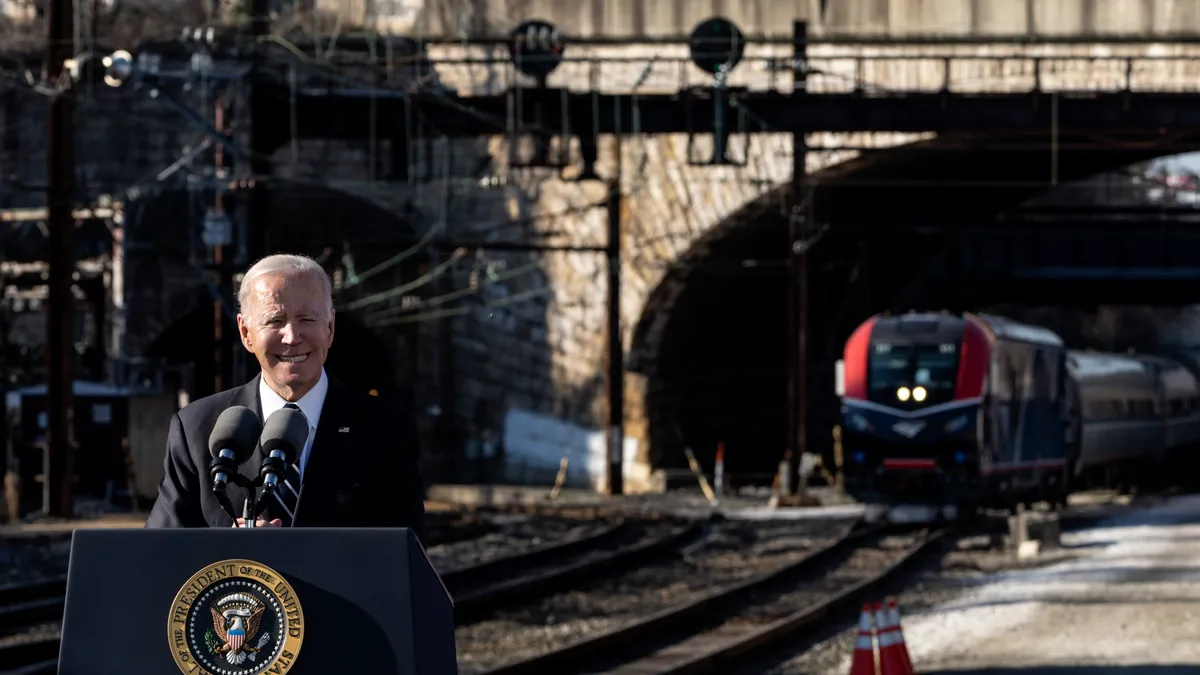Dive Brief:
- Two years after President Joe Biden signed it into law, the Infrastructure Investment and Jobs Act is fueling thousands of projects around the country and has helped boost construction employment, according to a White House progress update. The five-year, $1.2 trillion federal IIJA includes $550 billion in new funding.
- The update came with state-by-state fact sheets and a map showcasing projects and awards that have been identified or are underway.
- The White House also said that the law appears to be boosting construction employment. “While many of the economic benefits of the legislation will play out over the coming years and decades, job gains in construction industries suggest that some benefits have already begun to emerge,” according to the release.
Dive Insight:
So far, nearly $400 billion has been announced for over 40,000 projects across the country, according to the White House. Announced funding, which is captured from agency press releases, is preliminary and non-binding, whereas awarded funding represents actual obligations, per the White House.
The largest portion of IIJA money is flowing to road and bridge construction, according to White House data analyzed by CNBC, followed by rail, broadband, power and water projects. In recent earnings calls, heads of AECOM, WSP and Granite Construction said the infrastructure act is giving their businesses a boost.
However, the IIJA’s size and complexity pose challenges to actual implementation, according to Brookings research. The funding flows through more than 400 programs and is channeled by a variety of federal, state and local entities. The Infrastructure Act’s Build America Buy America provisions established a U.S.-made mandate for certain construction materials on all federally funded infrastructure projects. Some construction groups oppose the measure, saying it can delay work and inflate project costs.
Years of underinvestment in infrastructure have taken a toll, according to the American Society of Civil Engineers. It gave U.S. infrastructure a ‘C minus’ on its most recent report card, with the country’s roads, bridges, airports and water systems rated in a ‘poor to mediocre condition’ and many needing updates to withstand the impacts of climate change. The IIJA aims to mitigate that repair and resilience backlog.
Construction employment gains
The White House identified rapid job gains since January 2021 in two major construction sectors: heavy and civil engineering, up by 9%, and building construction, up by more than 11%. They are largely driven in recent months by employment growth in highway, street and bridge construction as well as construction of nonresidential buildings, particularly manufacturing facilities, airports, bus terminals, factories and warehouses, its research shows.

In an effort to improve the quality of construction jobs, the Biden administration also recently updated the Davis-Bacon Act, which sets the prevailing wages contractors must pay workers on federal projects.
Contractor employer groups have sued the federal government over the recent final rule change to Davis-Bacon: Associated Builders and Contractors and its Southeast Texas chapter filed suit against the federal government in the U.S. District Court for the Eastern District of Texas and Associated General Contractors of America filed suit in the U.S. District Court for the Northern District of Texas.
While construction’s high demand for workers has fluctuated in recent months, the industry’s overall need for more labor won’t go anywhere anytime soon, said Anirban Basu, chief economist for Associated Builders and Contractors. That success is a double-edged sword: Struggles to find and retain workers threaten to stymie the feds’ infrastructure ambitions.












